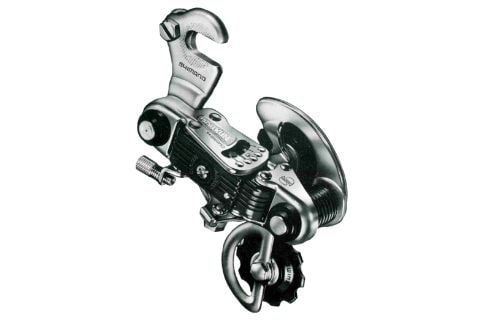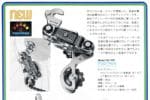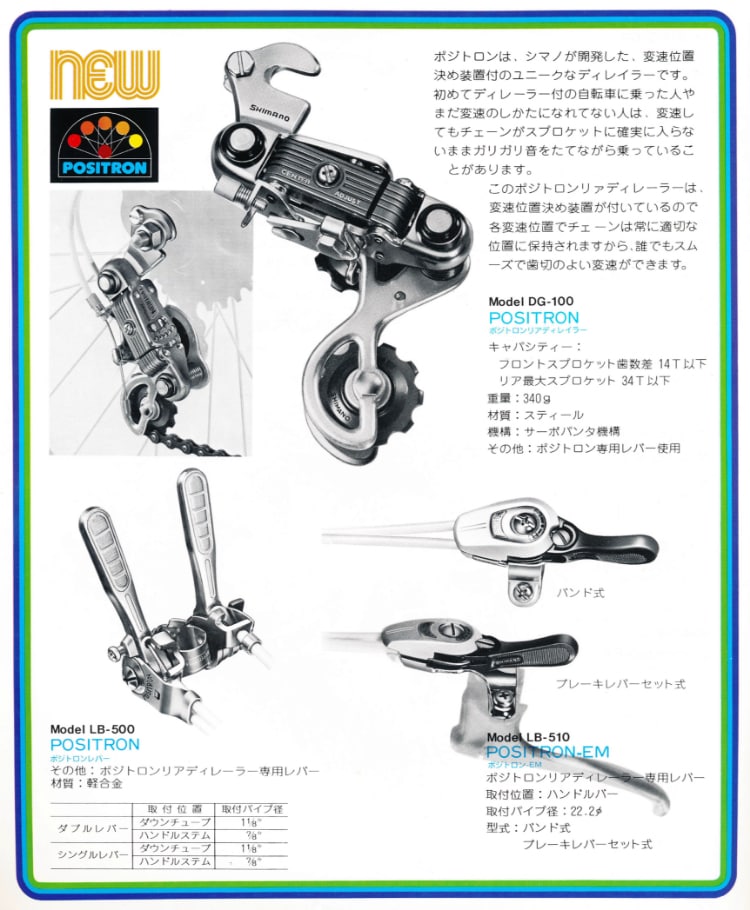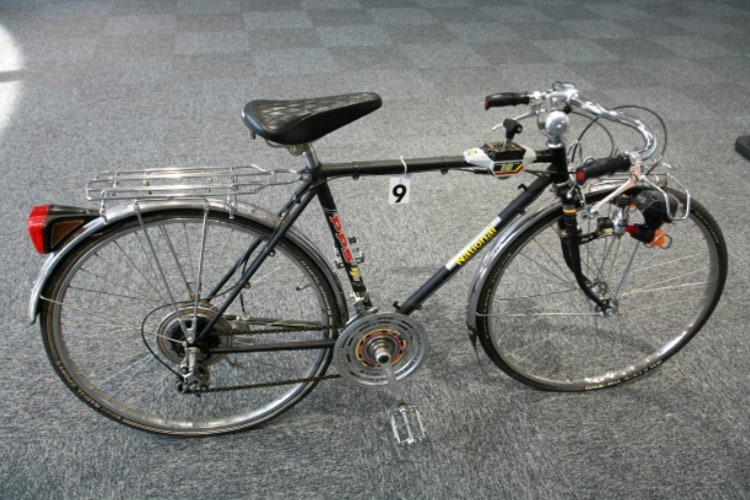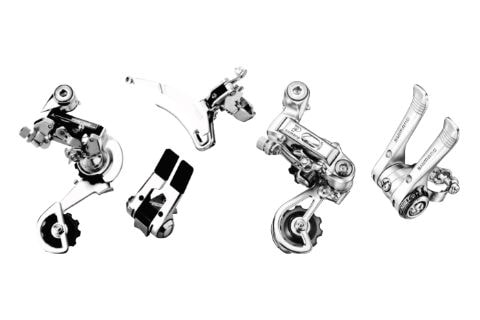STORY

Aiming to Promote the Use of Shifting Systems That Increase the Added Value of Bicycles
At the beginning of the 1970s, for shifting operation, the rider needed to move the shift lever by feel while listening for the sound of the gear change, and thus derailleurs were difficult for general users to handle. Also, since there was a growing recognition that shifting systems were used for sports bikes, they did not become popular for bicycles other than sports bikes. In the meantime, focusing on producing a shifting system that anyone could use easily, Shimano announced POSITRON in 1974. This rear derailleur equipped with an index system enabled the rider to securely shift gears without needing to move the shift lever with small adjustment. This brought a great boon to general users who could not handle conventional derailleurs. After that, technologies for smooth and safe shifting responding to all kinds of riding environments and situations were originated one after another. Thanks to the development of these technologies, shifting operation became so easy that even children could perform it, lowering the bar to shifting systems dramatically. POSITRON I, which came to be mounted on junior sports bikes in the latter half of the 1970s, was regarded as a derailleur for children within the industry. Nevertheless, once people began to understand that POSITRON, which was developed by incorporating many advanced technologies, withstood use in harsh climates like in Europe, this product became favored by not only users but also dealers and completed bicycle manufacturers.
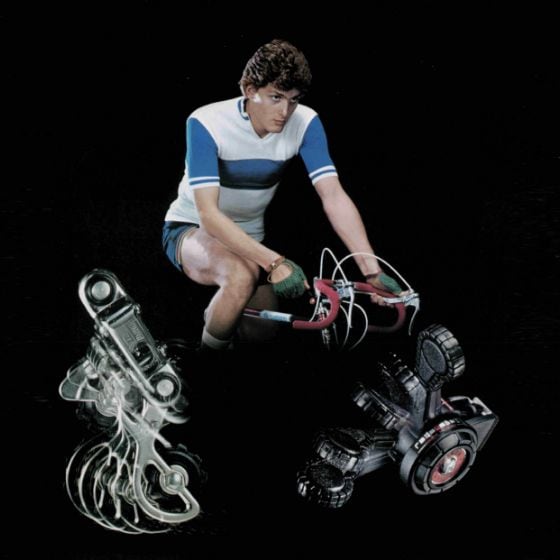

Continuing to Evolve into Shimano Index System (SIS)
Aiming to further spread the use of sports bicycles, in the 1960s, Shimano started to focus on developing shifting systems that were comfortable and safe for all users. POSITRON, which was announced in 1974, incorporated an index system named the Positron System. POSITRON II, announced in 1976, incorporated the Positive Pre-select System (PPS), in which by shifting gears in advance when the bicycle was not moving, the rider could start pedaling with the gears shifted. This made it easier and safer for the rider to start pedaling in a low gear and on hills. Also, POSITRON II used a steel wire cable instead of conventional wire, which successfully prevented a decline in shifting performance due to stretch and rust, which was a weak point in the use of wire. However, the push-pull cable mechanism using steel wires had some problems. One was its high cost, and another was that it made it difficult for users to route the cable since it was fairly rigid. To solve these problems, in POSITRON III, announced in 1978, the wire returned to normal, and the index system was equipped with a shift lever, which became the blueprint of the later developed SIS. However, since it could not deliver sufficient performance as a shifting system at that time, it was not satisfactory.
In NEW POSITRON (PV 11), announced in 1982, an index system was attached to both shift lever and rear derailleur. However, this caused other problems: the two index systems could fall out of sync with each other and lever operations became heavy. These problems were solved by NEW POSITRON (NP11), which was announced in 1983. The newly developed double servo-pantograph mechanism adopted in the rear derailleur improved shifting performance significantly. Secure shifting became possible with the single index system incorporated into the shifting lever. This product became the origin of the later developed SIS.
In NEW POSITRON (PV 11), announced in 1982, an index system was attached to both shift lever and rear derailleur. However, this caused other problems: the two index systems could fall out of sync with each other and lever operations became heavy. These problems were solved by NEW POSITRON (NP11), which was announced in 1983. The newly developed double servo-pantograph mechanism adopted in the rear derailleur improved shifting performance significantly. Secure shifting became possible with the single index system incorporated into the shifting lever. This product became the origin of the later developed SIS.



